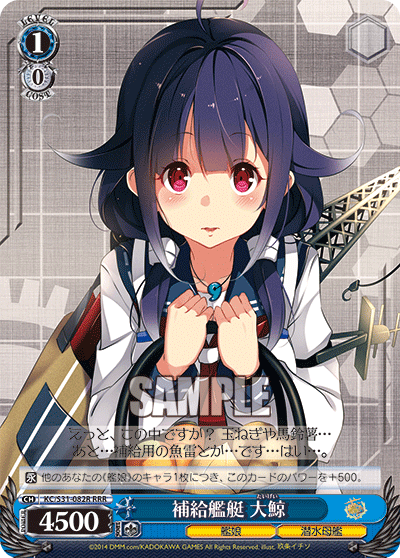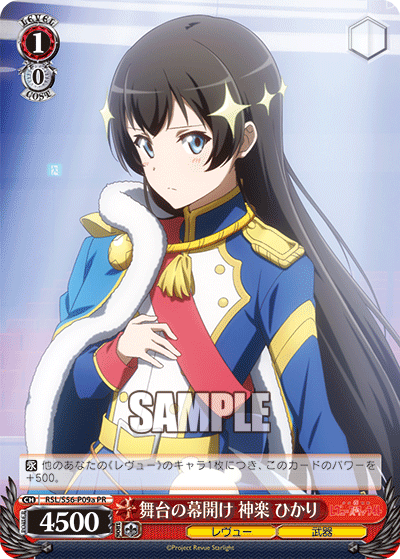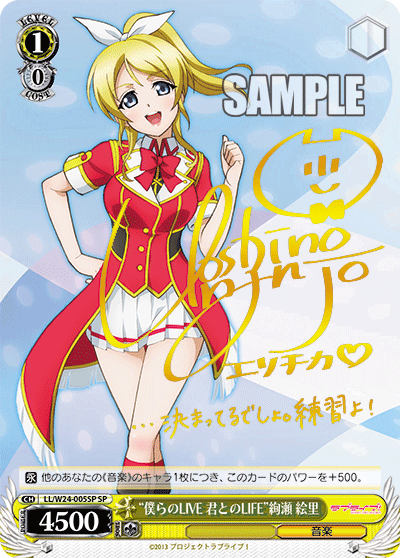Whale, whale, whale. What is a Taigei, you might ask? Well, the base translation of Taigei (大鯨) roughly translates to big whale. Well, in the game’s terms, Taigei responds to a the namesake of a certain girl that is quite simply great herself.

Contrary to popular belief (if such existed), Taigei above is not actually the original card with this kind of effect. The original “Taigei” instead belonged to that of a Lucky Star allegedly in the form of Konata in 2009. Taigei herself came out in 2014 in the second booster for Kantai Collection.
Taigei’s effect is quite simple. The basic keyword premise is a card that gains power multiplied by the number of other characters that fulfill x trait or or y requirement listed on the card. Prior to the release of Taigei clones, Taigei cards have existed in the game in the form of 1/1 or cards that gain that effect in later levels.
*Many may refer to Taigei effects as any card that gains power based on x amount of other requirements on stage, but for the sake of simplicity, Taigei will be exclusively based on a 1/0 card with that profile.*
Taigei in her prime was considered quite a beneficial effect. Gaining 500 power for each of your other characters effectively made Taigei a 6500 beat-stick with a full board for no cost. Ideally your field would be flooded fully anyway, having a Taigei meant free power on the board with no demerit. Keep in mind that in the early days of the game, 6500 power before boosts was considered a very large amount of power in the game.



FZ/SE13-21R 聖堂教会の求道者 綺礼 (center)
LL/W24-005SP-SP “僕らのLIVE 君とのLIFE”絢瀬 絵里 (right)
Taigeis are, for the most part, obsolete in the newer game. The problem with Taigeis is aside from their constant power, they have no other effects. Even modern Taigeis have other abilities attached to them at the cost of a bit less power, which is a far better trade than a card that only carries persistent power. Still, during Taigei’s prime, the effect was very strong, capable of challenging many of their opponent’s cards on the field and acting as a free means to maintain board presence.